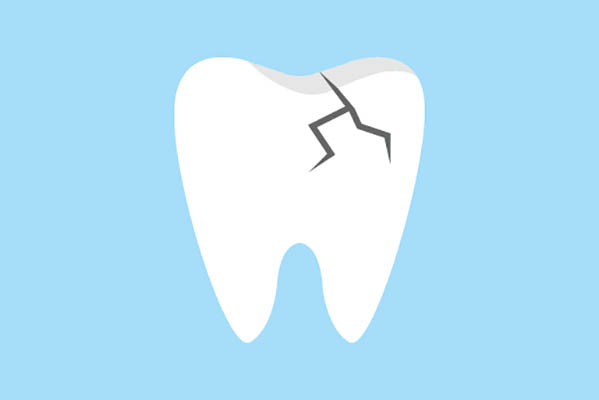How Dental Crowns Are Used With Dental Fillings

Dentists use dental crowns to preserve the integrity of the remaining natural dental structure. There are cases when cavities keep getting worse. Lack of routine dental checkups and poor dental care can lead to deeper cavities. This often leads to larger fillings with each dental check. If you want to know how dental crowns can help dental fillings, here are the details.
When dental fillings are enough
Some fillings are suitable to restore teeth. Larger fillings can be enough if the dentist uses an advanced type of material. The dentist does not need to sink the ceramic filling into the tooth. These fillings need dental bonding. This helps the filling keep the tooth together.
An onlay can serve as a large dental filling as well. The dentist will place this restoration over the cusps of the affected teeth. An onlay can hold the tooth together. It can also distribute the biting forces better. It is like the surface of a table on the tooth instead of a blockage in the cavity.
Biting forces, large fillings, and dental crowns
Chewing places about 573 pounds of force on molars. That is why these teeth need durable dental restorations. A large filling will become deeper and wider with repeated replacements. This is when the tooth’s natural structure becomes vulnerable to damage.
These large fillings weaken teeth. The biting forces can cause pain, cracks, fractures, and swollen roots. The tooth could even crack at its base. Tooth decay could set in, and the tooth could break.
The dentist can prevent this much damage from happening by covering the tooth with a crown. Dental crowns can cover the exposed area of teeth. They provide more stability to teeth with large dental fillings. These restorations can also hold the tooth together.
The root canal treatment and dental crowns
A crown can also help with the fillings in a root canal treatment. This procedure happens when the dental damage reaches a tooth’s pulp. This can result from dental trauma or decay. It can also occur in one or more teeth.
The dentist will access the tooth from the top of the tooth. From the opening, the dentist will scrape the infected pulp out. Cleaning the internal area of the tooth will follow. Disinfecting and drying this area will come next. Then, the dentist will place gutta-percha in the cleaned-out tooth.
The tooth starts to weaken the moment the dentist removes the pulp. The filling inside the tooth will strengthen the remaining healthy dental structure. The dentist will cement the custom-fit dental crown over the treated tooth. This will strengthen the tooth and hold it together. In cases like this, dental crowns can also protect the tooth from future damage.
The benefits of dental crowns
Pulpitis can cause inner tooth deterioration and death. A crown can help keep a dead tooth together. The dentist can remove the infected pulp with root canal treatment. Then, the dentist can disinfect the pulp cavity. A cap can keep the tooth from shattering into many pieces, especially if the treated tooth is a molar.
Severe dental damage can result in a brittle tooth. The dentist can use a dental crown to add strength to the tooth. This enables the patient to have a healthier tooth despite its weakness. The reinforcement of a cap can help the patient perform a normal dental function.
Dental crowns can protect a tooth from worsening dental decay. Some cases may not improve with a dental onlay or filling. A cap can help the tooth survive better. Crowns are permanent solutions to deteriorating teeth. They can even outlast dental bonding and dental veneers. These restorations can block starch and bacteria from invading the treated or weakened tooth.
Crowns are versatile dental restorations. Each cap can correct any dental blemish. It can cover staining, discoloration, and breakages. Caps can close gaps and even out the appearance of teeth. Small teeth can appear larger, and larger teeth can appear a little smaller. Slight dental misalignments can also straighten with the help of dental crowns.
Caring for caps
Crowns have durable materials. Porcelain is the most common type of material for caps. Even if porcelain crowns are durable, the patient must still stay away from hard and chewy foods. These types of foods can crack, chip, or dislodge caps. Good daily oral care and routine dental checks can help maintain crowns.
Dental crowns and fillings complete the form and function of teeth
Decay and trauma can weaken teeth. Repairing damaged teeth with fillings can either strengthen or weaken the treated teeth. Your dentist will then reinforce your teeth with dental crowns. This restoration can strengthen and hold your teeth together. Caps can also protect them from future damage.
Are you considering getting dental crowns in the Brooklyn area? Get more information at https://www.myddsny.com.
Check out what others are saying about our dental services on Yelp: Dental Crowns in Brooklyn, NY.
Related Posts
A porcelain crown is a versatile dental restoration that protects and preserves damaged, weakened, or decayed natural teeth. By encasing the visible portion of a tooth, a porcelain crown restores its function, strength, and appearance. This treatment effectively saves a natural tooth from further damage, ensuring long-term oral health and maintaining the aesthetics of your…
Dental crowns can treat many different concerns. They can repair damaged teeth, attach to dental implants for teeth replacement, and more. Two of the main types of dental crowns are metal and porcelain crowns. Both are effective solutions, but one may be preferable to another depending on the intended purpose.Your dentist should help you decide…
Dental crowns and veneers can both restore the function and appearance of damaged teeth. That damage can take the form of decay, discoloration, chips or cracks, or a crooked appearance. The main difference is that a crown goes over the whole tooth, whereas a veneer only sits on the front. Beyond that, there are pros…
A dentist may advise their patients to get a dental crown to replace old or worn-out fillings. A dental filling is often used to treat a small to medium-sized region of dental decay. Even though fillings are designed to last for a long time, they might fail or fall out for various reasons, such as…


